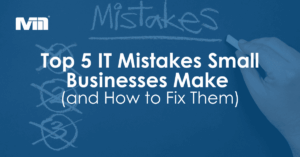Email is still one of the top ways cybercriminals target businesses—and phishing scams are getting harder to spot. For companies in Toronto, falling for just one fake email could mean data breaches, financial loss, or serious damage to your reputation.
Here’s how to recognize phishing emails and protect your team.
1. Check the Sender’s Email Address
The name might look familiar, but hover over the actual email address. If it has random letters or doesn’t match the company’s domain, that’s a red flag.
Example:
Name: Microsoft Support
Email: support@micros0ft-help-secure.net
Looks legit at a glance—but it’s not.
2. Look for Urgency or Threats
Scammers love panic. Subject lines like “Urgent: Your Account Will Be Suspended” are designed to make you click before thinking.
If the message pushes you to act now or threatens consequences, stop and double-check.
3. Watch Out for Links and Attachments
If the email asks you to click on a link or download something, be cautious—especially if it wasn’t expected.
- Hover over links to preview the URL.
- Don’t open attachments from unknown senders.
If it looks strange, it probably is.
4. Grammar and Typos
Professional companies usually don’t send emails with awkward phrasing or grammar issues. If the message sounds off or feels robotic, trust your gut.
5. Requests for Personal or Financial Info
Legit companies won’t ask for login credentials, banking details, or social insurance numbers over email. If an email asks for this—don’t respond.
How to Protect Your Business in Toronto
- Train your team to recognize phishing tactics
- Use multi-factor authentication (MFA)
- Keep your software and security tools updated
- Partner with a trusted IT provider
Think One Suspicious Email Couldn’t Do Much Damage?
It only takes one wrong click.
At MIT Consulting, we help Toronto businesses strengthen their email security, train their staff, and avoid cyber traps before they happen.
- Contact us today to review your cybersecurity setup.
- Or explore more cybersecurity best practices.






